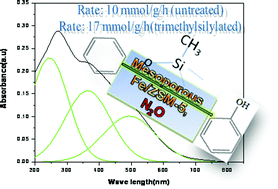Hierarchical mesoporous Fe/ZSM-5 with tunable porosity for selective hydroxylation of benzene to phenol†
Abstract
Hierarchical mesoporous

* Corresponding authors
a
Indian Institute of Petroleum, Dehradun, India
E-mail:
asinha@iip.res.in
Fax: +91 135 2660202
Tel: +91 135 2525842
b Department of Materials Science, Indian Association for the Cultivation of Science, Jadavpur, Kolkata, India
Hierarchical mesoporous

 Please wait while we load your content...
Something went wrong. Try again?
Please wait while we load your content...
Something went wrong. Try again?
B. S. Rana, B. Singh, R. Kumar, D. Verma, M. K. Bhunia, A. Bhaumik and A. K. Sinha, J. Mater. Chem., 2010, 20, 8575 DOI: 10.1039/C0JM01586E
To request permission to reproduce material from this article, please go to the Copyright Clearance Center request page.
If you are an author contributing to an RSC publication, you do not need to request permission provided correct acknowledgement is given.
If you are the author of this article, you do not need to request permission to reproduce figures and diagrams provided correct acknowledgement is given. If you want to reproduce the whole article in a third-party publication (excluding your thesis/dissertation for which permission is not required) please go to the Copyright Clearance Center request page.
Read more about how to correctly acknowledge RSC content.
 Fetching data from CrossRef.
Fetching data from CrossRef.
This may take some time to load.
Loading related content
